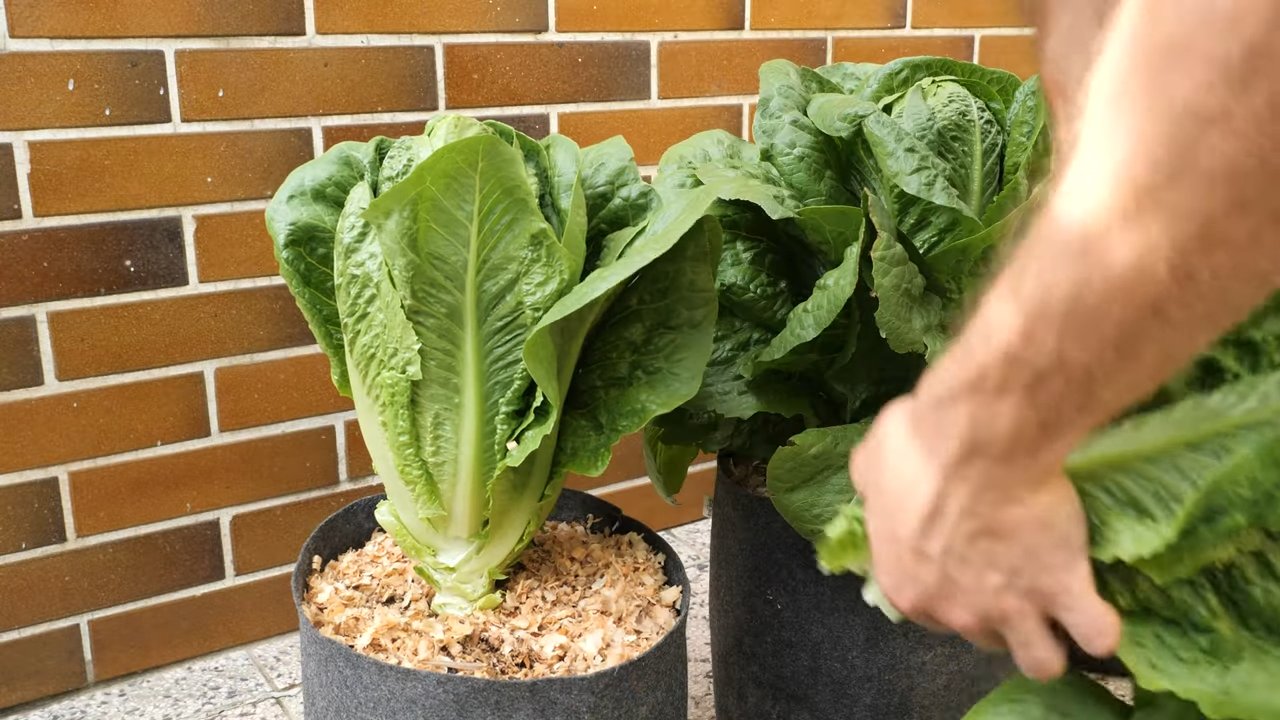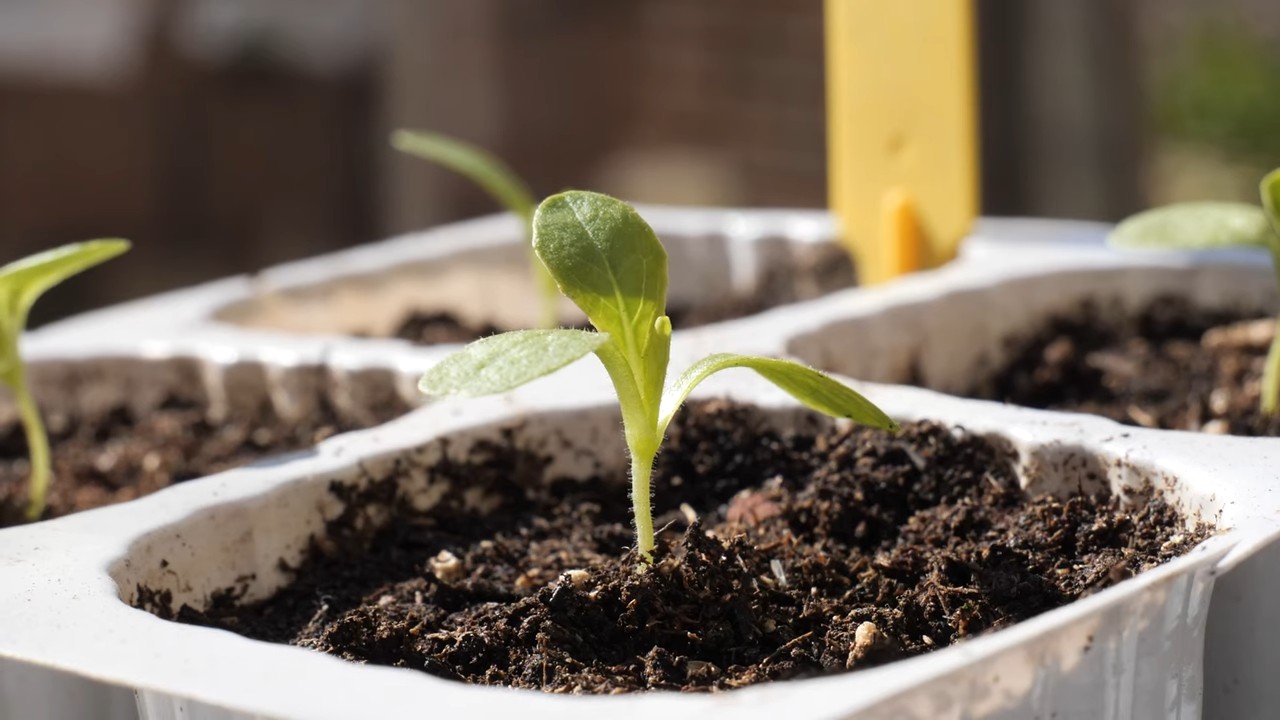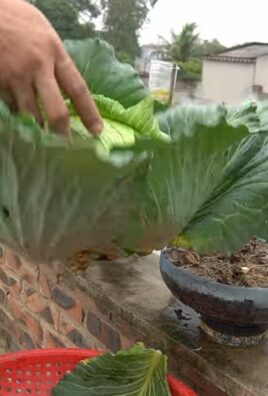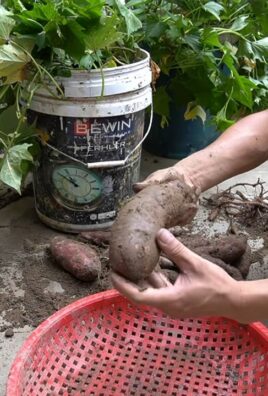Growing Romaine Lettuce Ground can seem daunting, especially if you’re new to gardening. But trust me, with a few simple tricks and a little DIY know-how, you can enjoy fresh, crisp romaine lettuce straight from your backyard! Imagine stepping outside and harvesting the perfect leaves for your Caesar salad – that’s the magic we’re about to unlock together.
For centuries, romaine lettuce has been a staple in diets around the world. Originating in the Mediterranean, it was prized by the ancient Egyptians and Romans, who recognized its nutritional value and delicious flavor. Today, we can easily find romaine in grocery stores, but there’s something incredibly satisfying about growing romaine lettuce ground yourself. It’s fresher, tastier, and you know exactly what went into it – no mystery chemicals here!
Why bother with DIY gardening, you ask? Well, store-bought lettuce can be expensive, and sometimes it just doesn’t have that vibrant, fresh taste. Plus, learning how to grow your own food is an empowering experience. This article is packed with easy-to-follow tips and tricks that will help you cultivate a thriving romaine lettuce patch, even if you have limited space or gardening experience. We’ll cover everything from soil preparation to pest control, ensuring you have a bountiful harvest. Let’s get our hands dirty and start growing!

Growing Romaine Lettuce in Your Backyard: A DIY Guide
Hey there, fellow garden enthusiasts! I’m so excited to share my tried-and-true method for growing crisp, delicious Romaine lettuce right in your own backyard. Forget those flimsy, overpriced heads at the grocery store – with a little effort, you can have a constant supply of fresh, organic lettuce for salads, wraps, and more. Let’s get our hands dirty!
Choosing the Right Location and Preparing the Soil
Romaine lettuce thrives in cool weather, so timing is key. I usually aim for planting in early spring or late summer for a fall harvest. Here’s what you need to consider:
* Sunlight: Romaine needs at least 6 hours of sunlight per day. A spot with morning sun and afternoon shade is ideal, especially in warmer climates.
* Soil: Well-drained, fertile soil is crucial. Lettuce prefers a slightly acidic to neutral pH (around 6.0 to 7.0).
* Protection: Choose a location sheltered from strong winds, which can damage the delicate leaves.
Now, let’s get that soil ready!
1. Clear the Area: Remove any weeds, rocks, or debris from the planting area. I like to use a garden fork to loosen the soil.
2. Amend the Soil: This is where the magic happens! Incorporate plenty of organic matter, such as compost, well-rotted manure, or leaf mold. This will improve drainage, fertility, and water retention. I usually add a 2-3 inch layer and mix it in thoroughly.
3. Test the pH (Optional): If you’re unsure about your soil’s pH, you can use a soil testing kit. If it’s too acidic, add lime to raise the pH. If it’s too alkaline, add sulfur to lower it.
4. Rake it Smooth: Once you’ve amended the soil, rake the surface smooth to create a level planting bed.
Starting from Seed vs. Transplants
You have two options for starting your Romaine lettuce: from seed or from transplants. Both have their pros and cons.
* Seeds: Starting from seed is more economical, and you have a wider variety of Romaine types to choose from. However, it requires more time and attention, especially in the early stages.
* Transplants: Transplants are more convenient and offer a head start. You can find them at most garden centers. However, they can be more expensive, and you might have limited variety options.
I personally prefer starting from seed because I enjoy the process and love having more control over the varieties I grow. But if you’re short on time or new to gardening, transplants are a great option.
Starting Romaine Lettuce from Seed (My Preferred Method)
If you’re going the seed route, here’s how I do it:
1. Choose Your Seeds: Select a Romaine variety that suits your climate and taste preferences. Some popular choices include ‘Paris Island Cos,’ ‘Little Gem,’ and ‘Dark Green Romaine.’
2. Start Indoors (Optional): To get a head start, you can start your seeds indoors 4-6 weeks before the last expected frost. Sow the seeds in seed trays or small pots filled with seed-starting mix. Keep the soil moist and provide plenty of light.
3. Direct Sow Outdoors: Once the soil has warmed up and the danger of frost has passed, you can direct sow the seeds outdoors. Sow the seeds about ¼ inch deep and ½ inch apart in rows that are 12-18 inches apart.
4. Water Gently: After sowing, water the seeds gently to avoid disturbing them. Keep the soil consistently moist until the seedlings emerge.
5. Thin the Seedlings: Once the seedlings have developed a few true leaves, thin them to about 6-8 inches apart. This will give them enough space to grow and prevent overcrowding. I know it’s hard to thin them, but it’s necessary!
Planting Romaine Lettuce Transplants
If you’re using transplants, the process is even simpler:
1. Harden Off the Transplants: Before planting, gradually acclimate the transplants to outdoor conditions by exposing them to increasing amounts of sunlight and wind over a period of 7-10 days. This will help them adjust to their new environment and prevent transplant shock.
2. Dig Holes: Dig holes that are slightly larger than the root balls of the transplants. Space the holes 6-8 inches apart in rows that are 12-18 inches apart.
3. Plant the Transplants: Gently remove the transplants from their containers and place them in the holes. Make sure the top of the root ball is level with the soil surface.
4. Backfill and Water: Backfill the holes with soil and gently firm the soil around the base of the plants. Water thoroughly to settle the soil and provide moisture.
Caring for Your Romaine Lettuce
Once your Romaine lettuce is planted, it’s important to provide proper care to ensure a healthy and bountiful harvest.
* Watering: Romaine lettuce needs consistent moisture, especially during hot, dry weather. Water deeply and regularly, aiming for about 1 inch of water per week. Avoid overhead watering, which can promote fungal diseases. I prefer using a soaker hose or drip irrigation.
* Fertilizing: Lettuce is a relatively light feeder, but it benefits from regular fertilization. I like to use a balanced organic fertilizer, such as fish emulsion or compost tea, every 2-3 weeks.
* Weeding: Keep the planting area free of weeds, which can compete with the lettuce for nutrients and water. Hand-pull weeds carefully to avoid disturbing the lettuce roots.
* Pest Control: Keep an eye out for common lettuce pests, such as aphids, slugs, and snails. I prefer using organic pest control methods, such as insecticidal soap, diatomaceous earth, or hand-picking.
* Bolting Prevention: Bolting (when the lettuce sends up a flower stalk) is a common problem in hot weather. To prevent bolting, choose heat-tolerant varieties, provide afternoon shade, and water regularly. You can also harvest the lettuce leaves frequently to encourage continued growth.
Harvesting Your Romaine Lettuce
The best part! You can start harvesting your Romaine lettuce when the heads are about 6-8 inches tall.
1. Cut the Head: Use a sharp knife to cut the head of lettuce at the base, just above the soil line.
2. Harvest Outer Leaves: Alternatively, you can harvest the outer leaves as needed, allowing the inner leaves to continue growing. This is known as the “cut-and-come-again” method.
3. Wash and Store: After harvesting, wash the lettuce leaves thoroughly and store them in a plastic bag in the refrigerator. They should stay fresh for about a week.
Troubleshooting Common Problems
Even with the best care, you might encounter some problems while growing Romaine lettuce. Here are a few common issues and how to address them:
* Yellowing Leaves: This can be caused by overwatering, underwatering, nutrient deficiencies, or disease. Check the soil moisture and fertility, and look for signs of disease.
* Slugs and Snails: These pests can devour lettuce leaves overnight. Use slug bait, diatomaceous earth, or hand-pick them at night.
* Aphids: These tiny insects can suck the sap from lettuce leaves, causing them to become distorted and yellow. Spray with insecticidal soap or release beneficial insects, such as ladybugs.
* Bolting: As mentioned earlier, bolting is caused by hot weather. Choose heat-tolerant varieties, provide afternoon shade, and water regularly.
Enjoying Your Homegrown Romaine Lettuce
Now that you’ve successfully grown your own Romaine lettuce, it’s time to enjoy the fruits (or rather, vegetables) of your labor! Use it in salads, wraps, sandwiches, or as a garnish. The possibilities are endless! I love making a classic Caesar salad with my homegrown Romaine – it’s so much more flavorful than store-bought lettuce.
Growing your own Romaine lettuce is a rewarding experience that allows you to enjoy fresh, healthy produce right from your backyard. With a little planning and effort, you can have a constant supply of delicious lettuce throughout the growing season. Happy gardening!

Conclusion
So, there you have it! Growing romaine lettuce from the ground, often overlooked, is a surprisingly simple and rewarding endeavor that can transform your kitchen scraps into a continuous supply of fresh, crisp greens. Forget those wilted, expensive heads of lettuce from the grocery store. With a little patience and this straightforward DIY trick, you can enjoy the satisfaction of harvesting your own organic romaine, knowing exactly where it came from and what went into it.
This isn’t just about saving money; it’s about connecting with your food, reducing waste, and adding a touch of green to your life. Imagine the vibrant salads, the crunchy wraps, and the delicious additions to your sandwiches, all sourced directly from your own kitchen or garden. The taste of homegrown romaine is noticeably fresher and more flavorful than anything you can buy, and the pride you’ll feel in nurturing it from a discarded base is immeasurable.
But the benefits don’t stop there. Growing romaine lettuce from the ground is also an incredibly sustainable practice. By regrowing your lettuce, you’re reducing your carbon footprint, minimizing food waste, and contributing to a more environmentally friendly lifestyle. It’s a small change that can make a big difference.
Ready to take your romaine growing to the next level? Consider experimenting with different varieties of romaine. There’s the classic green romaine, of course, but also red romaine, which adds a beautiful splash of color to your salads. You can also try growing different types of lettuce alongside your romaine, such as butter lettuce or spinach, to create a diverse and flavorful salad garden.
Another variation to explore is hydroponic growing. While this guide focuses on growing romaine lettuce from the ground in soil, you can also adapt the technique to a hydroponic system. This involves growing the lettuce in water enriched with nutrients, without the need for soil. Hydroponics can be a great option for those with limited space or those who want to grow lettuce indoors year-round.
Don’t be afraid to experiment with different growing mediums as well. While potting mix is a good starting point, you can also try using compost, vermicompost, or a combination of different materials. Each medium will provide different nutrients and drainage properties, so it’s worth experimenting to see what works best for you.
We encourage you to give this DIY trick a try. It’s easy, affordable, and incredibly rewarding. Once you’ve harvested your first head of homegrown romaine, we’re confident you’ll be hooked. And remember, the key to success is patience and consistent care.
So, grab a romaine lettuce base, a pot of soil, and get ready to embark on your own romaine-growing adventure. We can’t wait to hear about your experiences! Share your photos, tips, and questions in the comments below. Let’s build a community of romaine-growing enthusiasts and inspire others to embrace this simple and sustainable practice. Happy growing!
Frequently Asked Questions (FAQ)
How long does it take to regrow romaine lettuce from the ground?
The time it takes to regrow romaine lettuce from the ground can vary depending on several factors, including the variety of lettuce, the growing conditions (temperature, light, humidity), and the quality of the initial lettuce base. Generally, you can expect to see new growth within a week or two. It may take several weeks, or even a couple of months, to grow a full head of lettuce ready for harvest. Be patient and consistent with watering and providing adequate light, and you’ll be rewarded with fresh, homegrown romaine.
What kind of soil is best for growing romaine lettuce?
Romaine lettuce thrives in well-draining soil that is rich in organic matter. A good quality potting mix is an excellent choice for growing romaine in containers. You can also amend your garden soil with compost or other organic materials to improve its fertility and drainage. The ideal soil pH for romaine lettuce is between 6.0 and 7.0. If you’re unsure about your soil’s pH, you can purchase a soil testing kit from your local garden center.
How much sunlight does romaine lettuce need?
Romaine lettuce needs at least six hours of sunlight per day to grow properly. If you’re growing romaine indoors, you may need to supplement natural light with grow lights. Place your lettuce near a sunny window or under a grow light for optimal growth. If you’re growing romaine outdoors, choose a location that receives full sun. However, in hot climates, romaine lettuce may benefit from some afternoon shade to prevent bolting (going to seed).
How often should I water my romaine lettuce?
Romaine lettuce needs consistent moisture to thrive. Water your lettuce regularly, keeping the soil consistently moist but not waterlogged. Check the soil moisture level daily, and water when the top inch of soil feels dry to the touch. Avoid overwatering, as this can lead to root rot. During hot weather, you may need to water your lettuce more frequently.
How do I prevent my romaine lettuce from bolting?
Bolting is when lettuce prematurely goes to seed, resulting in bitter-tasting leaves. To prevent bolting, keep your lettuce well-watered, especially during hot weather. Provide some afternoon shade if you live in a hot climate. Choose bolt-resistant varieties of romaine lettuce. Harvest your lettuce regularly to encourage continued leaf production and delay bolting.
Can I grow romaine lettuce indoors year-round?
Yes, you can grow romaine lettuce indoors year-round, provided you have adequate light and temperature control. Use grow lights to supplement natural light, and maintain a consistent temperature between 60 and 70 degrees Fahrenheit. Choose a well-draining potting mix, and water your lettuce regularly. With proper care, you can enjoy fresh, homegrown romaine lettuce even in the dead of winter.
What are some common pests and diseases that affect romaine lettuce?
Some common pests that affect romaine lettuce include aphids, slugs, snails, and cutworms. You can control these pests by handpicking them off the plants, using insecticidal soap, or applying diatomaceous earth. Common diseases that affect romaine lettuce include downy mildew, powdery mildew, and lettuce mosaic virus. Prevent these diseases by providing good air circulation, avoiding overwatering, and using disease-resistant varieties of lettuce.
How do I harvest romaine lettuce?
You can harvest romaine lettuce by cutting off the entire head at the base, or by harvesting individual leaves as needed. To harvest individual leaves, start with the outer leaves and work your way inwards. This will allow the inner leaves to continue growing. Harvest your lettuce in the morning, when the leaves are crisp and fresh.
Can I use fertilizer to help my romaine lettuce grow?
Yes, you can use fertilizer to help your romaine lettuce grow, but it’s important to use a balanced fertilizer that is specifically formulated for leafy greens. Follow the instructions on the fertilizer package carefully, and avoid over-fertilizing, as this can burn the roots of the lettuce. You can also use organic fertilizers, such as compost tea or fish emulsion, to provide nutrients to your lettuce.
Is it safe to eat romaine lettuce that has been regrown from the ground?
Yes, it is generally safe to eat romaine lettuce that has been regrown from the ground, provided you follow proper hygiene practices. Wash the lettuce thoroughly before eating it to remove any dirt or debris. If you’re concerned about potential contamination, you can soak the lettuce in a solution of water and vinegar before washing it. Always use clean water and containers when growing and washing your lettuce.




Leave a Comment